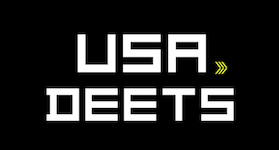
Yes, Prepaid insurance is indeed considered an asset as it represents a prepayment for future protection, standing proudly on a company’s balance sheet.
Hey there, fellow financial enthusiasts! Today, let’s dive into a topic that might sound a bit puzzling at first – prepaid insurance. Ever wondered if it’s truly an asset? Well, stick around, and we’ll unravel this financial enigma together.
Types of Prepaid Insurance
Below is a table that outlines various types of prepaid insurance and their classification as assets, liabilities, tangible, or intangible:
| Prepaid Insurance Type | Asset/Liability | Tangible/Intangible |
|---|---|---|
| Property Insurance | Asset | Tangible |
| Health Insurance | Asset | Intangible |
| Life Insurance | Asset | Intangible |
| Business Interruption Insurance | Asset | Intangible |
| Liability Insurance | Asset | Both Tangible and Intangible |
| Rental Car Insurance | Asset | Tangible |
This table provides a general classification, and it’s important to note that the specific accounting treatment may vary based on company policies and regulations. The classification of tangible or intangible depends on whether the prepaid insurance is associated with physical property (tangible) or provides coverage for non-physical risks (intangible).
What is prepaid insurance?
Imagine you’re embarking on a road trip, and you decide to pay for your car insurance upfront. That upfront payment is what we call prepaid insurance. It’s like buying a ticket to financial security, ensuring that if unexpected bumps come your way, you’re covered.
Is prepaid insurance a current asset?
Yes, Prepaid insurance is indeed classified as a current asset. When a company pays for insurance coverage in advance, it represents a financial resource that is expected to provide benefits within the next year. This prepayment is recorded on the balance sheet as a current asset, reflecting its short-term nature and its contribution to the company’s financial well-being over the coming months. It’s like having a financial safety net ready to kick in when the need arises, making prepaid insurance a key player in a company’s current asset lineup.
How to record prepaid insurance?
So, how does a company go about recording this magical prepaid insurance? It’s not as complicated as it may seem. When your business makes that upfront payment, it’s essentially securing future protection. You record this on your balance sheet as an asset – an asset that keeps your financial ship steady.
In accounting lingo, you increase (debit) the Prepaid Insurance account and balance it out by decreasing (crediting) your Cash or Bank account. It’s like a financial seesaw, making sure everything stays in perfect equilibrium.
The Financial Statement Waltz
Now, let’s talk about how this prepaid insurance dance reflects in your financial statements. On your balance sheet, this asset sits proudly, ensuring your company’s financial health is in tip-top shape. It’s an investment in safeguarding your future, showing investors and stakeholders that you’re thinking ahead.
But that’s not the end of the story. As time passes and that insurance coverage starts kicking in, you’ll need to do a little tango with your income statement. Here, you gradually expense out the prepaid insurance amount. It’s like unmasking a superhero – revealing its true power over time.
Real Life Example
Let’s consider a real-life example of a small business, ABC Electronics, to illustrate how prepaid insurance is recorded in the balance sheet.
ABC Electronics
ABC Electronics decides to pay $12,000 upfront for a one-year insurance policy to safeguard its equipment and facilities. Here’s how they record it:
| Date | Transaction Description | Debit ($) | Credit ($) |
|---|---|---|---|
| Jan 1, 2023 | Paid upfront for one-year insurance coverage | Prepaid Insurance $12,000 | Cash $12,000 |
Balance Sheet Snapshot: Before Prepaid Insurance Adjustment
| Assets | Liabilities & Equity |
|---|---|
| Cash $12,000 |
Now, as time goes by, ABC Electronics needs to adjust its balance sheet to reflect the portion of the insurance that has been used up. Let’s say six months have passed, and they need to account for $6,000 of the prepaid insurance that has been utilized.
Adjustment Entry:
| Date | Transaction Description | Debit ($) | Credit ($) |
|---|---|---|---|
| June 30, 2023 | Recognizing insurance expense for 6 months | Insurance Expense $6,000 | Prepaid Insurance $6,000 |
Balance Sheet Snapshot: After Prepaid Insurance Adjustment
| Assets | Liabilities & Equity |
|---|---|
| Cash $12,000 | |
| Prepaid Insurance $6,000 |
This adjustment reflects the remaining $6,000 of prepaid insurance as an asset on the balance sheet. It’s a practical way for ABC Electronics to show not just the initial payment but also the ongoing value of the insurance over time.
Is prepaid insurance a debit or credit?
When dealing with prepaid insurance in accounting, think of it as a friendly financial dance between debits and credits. Initially, when a company makes an upfront payment for insurance, it’s a two-step move – a debit to increase the Prepaid Insurance account, acknowledging the rise in this valuable asset, and a credit to decrease the Cash or Bank account, recognizing the outflow of funds. It’s like a balanced choreography ensuring the books stay in harmony. As time passes, and the insurance coverage kicks in, there’s a follow-up dance. Adjusting entries involve a debit to Insurance Expense, signifying the cost incurred, and a credit to Prepaid Insurance, indicating the gradual utilization of the prepaid amount. So, prepaid insurance starts with a debiting flourish, and its accounting routine continues with graceful adjustments to keep the financial performance in tune.
References
For authoritative information on accounting and financial topics, you can refer to reputable websites and sources. Here are some authentic websites that are widely recognized:
- Financial Accounting Standards Board (FASB):
- Website: FASB
- International Financial Reporting Standards (IFRS) Foundation:
- Website: IFRS Foundation
- U.S. Securities and Exchange Commission (SEC):
- Website: SEC
- Investopedia:
- Website: Investopedia
- AccountingTools:
- Website: AccountingTools
- Khan Academy – Accounting and Finance:
- Website: Khan Academy
- The Institute of Management Accountants (IMA):
- Website: IMA
Remember to cross-reference information from multiple reputable sources to ensure accuracy and comprehensiveness. Always check the publication date of the materials you consult, as accounting standards and practices can be subject to updates and revisions over time.
FAQs
Q1: Is insurance an asset or a liability?
Insurance itself is neither an asset nor a liability on a company’s balance sheet. It represents a contractual agreement providing financial protection. However, when a company pre-pays for insurance, it becomes a prepaid expense, classified as an asset until the coverage is utilized.
Q2: Is prepaid liabilities an asset?
While the term “prepaid liabilities” may seem contradictory, prepaying for certain expenses like insurance creates a prepaid expense, which is indeed classified as an asset on the balance sheet. It reflects the future economic benefit that the company has paid for in advance.
Q3: What is the journal entry for prepaid insurance?
The journal entry for prepaid insurance involves a debit to the Prepaid Insurance account and a credit to the Cash or Bank account. This records the increase in the prepaid asset and the corresponding decrease in available funds due to the upfront payment.
Q4: Is prepaid insurance an intangible asset?
No, prepaid insurance is generally classified as a tangible asset. It represents a prepayment for a tangible service (insurance coverage) that will be utilized over time. Intangible assets typically represent non-physical assets like patents or trademarks.







